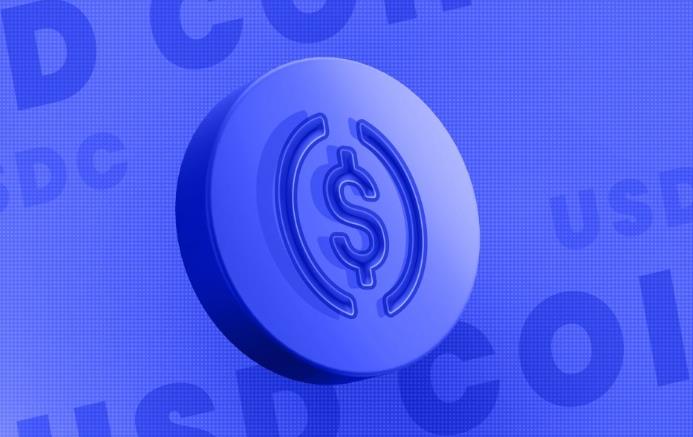On March 11, within a few hours of the collapse of Silicon Valley Bank, Circle, the issuer of the stablecoin USDC, announced that $3.3 billion in reserves was deposited in Silicon Valley Bank, triggering market panic, and both centralized and decentralized markets fell into massive chaos. On the morning of the 13th, Circle CEO Jeremy Allaire announced that USDC reserves are 100% safe. The Federal Reserve and other institutions also stated that depositors can withdraw all cash in Silicon Valley Bank, and the market panic gradually disappeared.
Like riding a roller coaster again, the crypto market fell into extreme panic overnight and returned to normal overnight. So, what happened to USDC? What exactly caused the USDC to unanchor, what were the collateral effects, what was the liquidity of the crypto market during the crisis, and how did the market recover? This article makes a review of the USDC crisis, using data to tell you what happened at that time.
USDC Unanchor Causes Massive Market Disruption
The Big Impact of CEX
USDC is mainly used in the DeFi ecosystem, so the liquidity on CEX is relatively low. As of last week, USDC accounted for less than 0.5% of the total trading volume on CEX. However, CEX had a huge influence in detonating the market chaos last weekend.
This is because in the unknown, traders can only think about one thing: where to liquidate their USDC holdings.
Today, there are only 8 USDC-USD active trading pairs on CEX, which effectively become the real-time exchange rate of USDC to USD. With Circle and Coinbase suspending USDC-to-USD conversions over the weekend, those trading pairs were the only way to withdraw funds.
But the problem is that these USD trading pairs are relatively illiquid: in the first week of March, the average daily trading volume was only 20-40 million USD. Trading volumes for these pairs hit an all-time high of $600 million on Saturday, led by Kraken, which offers the most liquid USDC-USD trading pair.
Sure enough, the order book was unable to support the large number of sell orders, causing the USDC exchange rate to plummet. Before USDC was unanchored, there were less than 20 million bids on the USDC-USD order book, which could not support hundreds of millions of sell orders.
While the USDC-USD pair is seeing unprecedented volume, most crypto market activity is not actually going through the U.S. dollar. Most traders use offshore exchanges, which do not offer direct USD conversion for USDC, but offer USDC-USDT trading pairs. The problem here is that Binance, the world’s largest exchange, delisted all USDC trading pairs back in September last year.
By noon on Saturday, Binance finally relisted the USDC-USDT trading pair, but by then USDC was already trading at a steep discount on the less liquid CEX. Shortly thereafter, volumes on the USDC-USDT trading pair reached an all-time high of $9.9 billion, as traders took turns selling or buying USDC at the off-peg price.
Overall, there was more selling than buying, causing Tether to trade at a high premium against both USD and USDC.
Derivatives exchanges are also trying to capitalize on this volatility as Binance relists a large number of USDC trading pairs. Until the end of the week, traders could only trade on Bybit, which has low trading activity. Over the weekend, open interest surged to an all-time high of $256 million. The funding rate remained volatile, oscillating between -0.13% and 1.08% as traders went short and long at the same time, but had returned to normal levels by the morning of the 13th.
Several other derivatives exchanges launched USDC perpetual contracts over the weekend, with leverage ranging from 10 times that of Bitmex, 20 times that of OKX, to 30 times that of Binance.
So, if these exchanges don’t use USDC very often, why does trading activity on CEXs have such a huge impact on the broader market turmoil? The most direct reason is that the DeFi price feed of stablecoins cannot provide a real US dollar exchange rate, because you cannot trade fiat currencies on DEX. This is why many protocols use decentralized price oracles to determine liquidation levels, and the data often comes directly from CEXs.
The reason is also that sites like CoinGecko, Coinmarketcap, etc. are the way they calculate their price feeds, and they rely heavily on centralized marketplaces. It’s worth noting that despite being one of the most liquid markets, Curve is not listed on CoinGecko or CMC’s USDC market pages.
Overall, illiquid centralized spot markets, the emergence of multiple USDC derivatives contracts, and rapidly spreading screenshots of currency prices and exchange rates exacerbated the unpegging incident. Like a bank run, the narrative becomes reality, obliterating the DeFi ecosystem.
DeFi Bears Major Brunt of USDC Unpegging
DeFi is actually built on USDC. The stablecoin provides vital stability to the lending protocol and accounts for a significant portion of the reserves of decentralized stablecoins such as DAI. Many DeFi protocols are built on the assumption that USDC will never break the anchor.
Over the weekend, Uniswap UNI 0.06% and Curve saw an all-time high in volume as traders swapped USDC for stablecoins like ETH or USDT. Since March 10, USDC-USDT volumes on Curve and Uniswap V3 are nearly identical, at $5.91 billion and $5.96 billion, respectively. On Uniswap V3, the USDC-USDT exchange rate reached a low of 0.6188:1; on Curve it reached 0.6911:1.
The upsurge of converting USDC has seriously unbalanced Curve 3pool, and the proportion of USDT in the pool has reached a low of about 2%. On March 13, the total value of 3pool was less than $400 million, of which nearly 95% were USDC and DAI, again reflecting the strong demand for USDT in the market.
Lending pools are also affected. On March 11, Aave and Compound received more than $2 billion in repayments, mostly in USDC, as borrowers were able to repay their loans cheaply because of their breakaway.
$400 million was withdrawn from Compound and $13.1 billion was withdrawn from Aave, of which $11.9 billion was in ETH. Note that this does not mean that TVL is down $13.1B; there were $13.6B deposited on Aave that day, as bots were particularly active on the protocol.
In general, the DeFi market has experienced two days of huge price dislocation, the entire ecosystem has generated countless arbitrage opportunities, and highlighted the importance of USDC.
Market Liquidity
Now, let us open our horizons and see how much impact these bank failures have had on the market.
The disruption of USD payment channels means that U.S. market makers have been pulling liquidity from exchanges as they decide how they can safely resume providing liquidity in crypto markets.
As a result, U.S. exchanges were hit the hardest in terms of liquidity, with Gemini Depth of Market down 74% in March, Coinbase down 50%, and Binance.US down 29%. On the other hand, Binance’s liquidity is down just 13% so far this month, thanks to its greater exposure to global markets.
When liquidity falls across the board, we can see wild swings in prices, and the lack of liquidity certainly played a role in the reaction to the bailout news. Among the top 10 crypto assets by market capitalization, liquidity in the crypto market fell 52% so far in March until the news that Silicon Valley Bank depositors would be compensated, exacerbating price volatility that followed.
However, market depth increased by more than $125 million overnight, or 30%, as price effects facilitated the recovery of USD liquidity on exchanges.
Although the price will affect the USD liquidity data of the exchange, a closer look at the liquidity at the transaction level will reveal that a large part of the growth actually comes from the recovery of USDC liquidity. Clearly Circle will get its $3.3 billion in Silicon Valley Bank on Monday morning, USDC will be closer to the peg, and market makers will happily start providing liquidity to USDC pairs again.
With USDC as the underlying asset, the additional liquidity provided overnight exceeded $100 million, of which more than $60 million belonged to the USDC-USDT trading pair relisted on Binance, and the USDC-USD trading pair on Kraken also injected 20 million USD liquidity.
Bull Market Reversal: Binance Sector Recovery Fund
At the same time, Binance announced that it will convert the remaining assets of its $1 billion industry recovery fund from BUSD to BTC, ETH and BNB. The announcement follows volatility in stablecoins, with BUSD implicated as its $250 million in reserves were held in the shuttered Signature Bank. While U.S. government officials have stated that all depositors will be compensated, Binance clearly sees BTC, ETH, and BNB as safer short-term options from a volatility and liquidity standpoint.
While the market rallied after news that SVB depositors would be compensated, BTC, ETH and BNB may see more positive inflows as Binance does not yet appear to be converting BUSD into the aforementioned assets. Our trading data shows that over the past 24 hours, the exchange’s BUSD pair still has more sell orders than buy orders, with no excess buy orders.
Considering that this exchange has not yet been completed, BTC, ETH and BNB will likely outperform the market in the short term. The three cryptocurrencies have outperformed a basket of altcoins by 7.5 percent so far this month, losing just 2.9 percent despite recent market volatility. Since the market bottomed on March 11, the three cryptocurrencies are up 11.5 percent, while altcoins have returned 7.8 percent.
Conclusion
While the full ramifications of Silvergate and Signature’s collapse are yet to be known, here are a few potential consequences that come to mind:
First, the impact on market liquidity will be widespread. With the closure of Silvergate and Signature, crypto market infrastructure has regressed as the crypto industry becomes more disconnected from the traditional banking system.
Real-time payment networks such as the Silvergate Exchange Network (SEN), SigNet, and others are critical to managing overnight and weekend liquidity — facilitating OTC trades, arbitrage between exchanges, and stablecoin cashouts outside normal opening hours. With these solutions gone, and no alternatives available for a while, fiat deposits may deteriorate, making price volatility more likely.
While the Federal Reserve has improved market liquidity through its newly created Bank Term Funding Program (BTFP), monetary policy uncertainty has risen, which may further fuel risk aversion among institutional traders. Market expectations for the Fed’s terminal rate fell to around 5% on Monday morning from nearly 6% last week, according to U.S. interest rate futures. Expectations for a 50bps rate hike at next week’s Fed meeting fell from 40% to zero in a matter of days, according to the CME FedWatch tool.
In general, the encryption industry has once again gone through a major market crisis, and as of Monday morning, the market has been in a relatively stable state.






